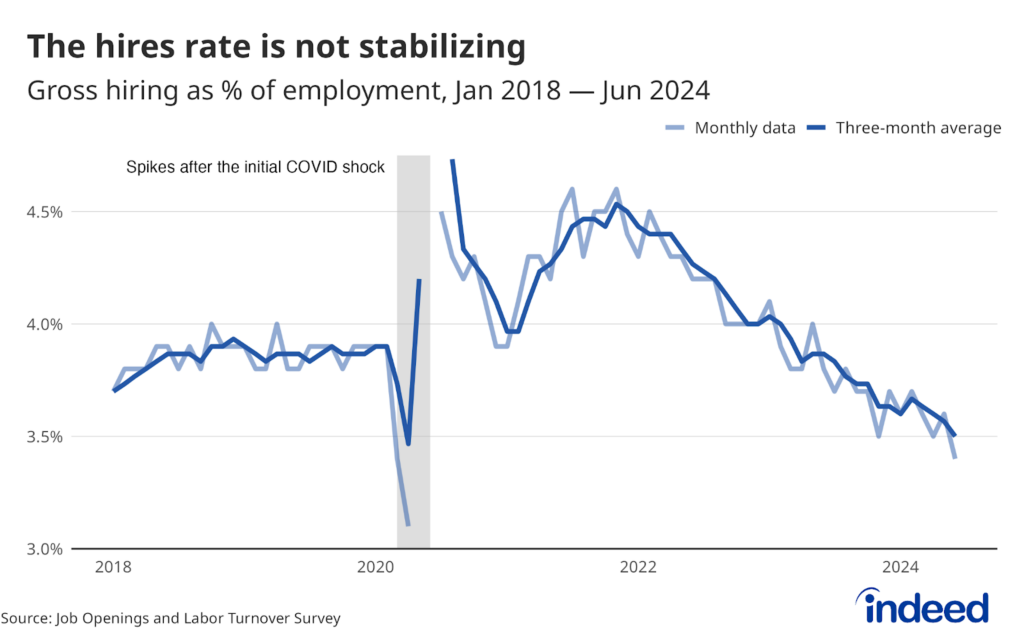Key points:
- The unemployment rate rose to 4.3% in July, its highest level since the fall of 2021.
- Employers are still adding jobs, but the private sector added only 97,000 jobs over the month and the breadth of gains across industries is dropping.
- Something needs to change for the labor market to remain relatively healthy, but it’s unclear if that change can come in time.
The soft landing in the US labor market is in danger. The unemployment rate is no longer drifting upward, but rather rising at a steady clip. Employers’ payrolls are still rising, but the gains are fading and becoming less common across industries. Whether we are in a recession or not is beside the point. Joblessness is on the rise and there’s no sign that the trends leading to this are abating; in fact, there are signs they could accelerate. The labor market is in a perilous spot. It’s not clear what changes and rescues it from its current trajectory.
The rise in unemployment will grab all the headlines today and for good reason: The unemployment rate rose to 4.3% and is now at its highest level since the fall of 2021. The data under the hood contains some relief but also reasons for anxiety. A key driver of the rise in July was an increase in job loser unemployment, much of which came from temporary layoffs. These workers could be recalled quickly to their old jobs, but we’ll have to wait and see. On the other hand, we saw a continued rise in the rate at which employed workers moved to unemployment, and a fall in the rate at which unemployed workers found jobs.
The payroll survey at least shows employment growing, but the gains are clearly slowing down. The private sector added only 97,000 jobs in July, less than half its pace in May. Job gains are also becoming thinner as the diffusion index came in below 50 in July, an indicator that less than half of industries added jobs over the month. Healthcare and social assistance may still be adding a fair number of jobs, but one sector can’t sustain an expansion by itself.
Yellow flags had started to pop up in the labor market data over the past few months, but now the flags are turning red. The rise in the unemployment rate cannot be ignored as job gains have weakened and become less common. Something needs to change for the labor market to remain relatively healthy, but it’s unclear if that change can come in time.


